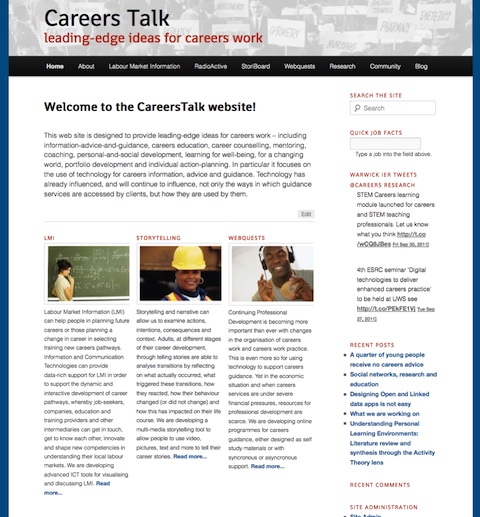This is proposal submitted by Andrew Ravenscroft, Graham Attwell, David Blagbrough and Dirk Stieglitz for the PLE2011 conference in Southampton has been accepted. We are going to have a lot of fun. And remember you can join us too. Whilst paper submissions are closed you can still submit proposals for posters pecha keucha or the media competition until June 11th.
Introduction: Designing personalized new media spaces to support transformational and emancipatory learning
Relatively recent research into, and definitions of, personalised learning environments (e.g. van Harmelen, 2008) have proposed new technological configurations or learning design patterns. These typically harmonise individual learner agency and initiative with a developing ecology of open web services and tools. This is the PLEs from an ‘alternative learning technology perspective’. Another and complementary way to view personalisation, that has a history beyond relatively recent technological developments, is to view ‘personlisation as practice’. In this sense, personalisation is rooted in the ‘deep’ matching and development of learners interests, experiences and motivations with their chosen informal or formal learning trajectories, that may be realized through personalised technologies. This is a psycho-social approach to personalisaton and learning technology design and use, that conceives of learning as something that grows out from the learner, rather than something that is acquired from some pre-structured, ‘external’ and ‘imposed’ curricula.
This position is particularly important when we are attempting to find technology-enabled ways to engage, retain and support the learning of disadvantaged people who are excluded, or at risk of exclusion, from traditional learning paths and trajectories. Arguably, this problem is most severe in the burgeoning numbers of NEETs (Not in Education Employment and Training) throughout the UK and Europe. Addressing the needs of these growing communities requires new and radical approaches to learning, learning design and technology-enabled practice. One foundation for a radical and technology-enabled pedagogy for disadvantaged groups is the groundbreaking work of Paulo Freire (1970).
Applying Friere to PLE design: Technical reformulation of ciphers
In Paulo Freire’s seminal work “Pedagogy of the Oppressed” (Freire, 1970), he emphasized the importance of critical engagement in and analysis of broader societal ‘cycles’ and their effects. One way to do this is through using lived culture, and praxis (action that is informed by values) as the foundational elements for developing circles that promote transformational learning. These ideas have recently been taken up within the non hierarchical, shared, creative, inclusive, safe and supported spaces called “ciphers” – which have emerged from the urban youth culture particularly around hip hop music (Wiliams, 2009).
We are currently using this cipher concept as a metaphor for designing and developing RadioActive, a hybrid of internet-radio and augmented social media platform to support the transformational learning of disadvantaged young people.
The RadioActive pilot
This presentation will describe the design, piloting and evaluation of RadioActive with NEETs in the London Borough of Hackney. The radio-social media platform is being co-designed with these NEETs and their support actors (such as youth workers and parents) in Hackney (in London). A key aspect is that the ‘going live’ aspect acts as a catalyst for community engagement and cohesion, linked to related social media activity. Put simply, the internet-radio gives a presence, real-time narrative and an energy that drives participation, interaction and content creation.
This is an innovative and participative broadcasting model that combines Open Source or easily affordable technology to create ‘the communities’ radio platform. This deliberately fuses, inspired by Web 2.0 trends, traditional distinctions between broadcaster/program planner and listener/consumer. The holistic design concept is an edutainment platform and hard to reach community combined, via the cipher approach, into a connected ‘live entity’ rather than the community being seen as a separate audience that is broadcast to.
The central idea is that this radio cipher provides the means to initially engage and retain NEETs, who can then be exposed to and participate in informal learning activities that lead to the development of skills and competencies that prepare them for Further Education or work. They develop both ‘soft’ and ‘hard’ skills through RadioActive. The softer ones relate to personal expression, the development of self-confidence and self-esteem, and the development of collaborative working skills. The harder ones involve the development of concrete digital literacy, media production, communication and organizational skills, that can exploited in other education or employment related activities. Similarly, their artefacts and competencies are recorded (e.g. in an eportfolio) or made public (e.g on the web) in ways that can be presented to potential Educators or Employers.
The proposed conference activities
This contribution will follow the collaborative and praxis driven spirit of this project and the PLE conference, through incorporating 2 related activities:
1. A presentation linked to the archive of the pilot radio show;
2. Mashup madness or a community in harmony? Live RadioActive show and DJ set during a social event at the conference, with RadioActive DJ’s mixing a set based on 1 or 2 favorite songs suggested by each delegate.
References
Friere, P. (1970). Pedagogy of the Oppressed, Continuum Publishing.
Van Harmelen, H., Design trajectories: four experiments in PLE implementation, Interactive Learning Environments, 1744-5191, Volume 16, Issue 1, 2008, Pages 35 – 46.
Wiliams, D. (2009). The critical cultural cypher: Remaking Paulo Frieire’s cultural circles using Hip Hp culture. International, Journal of Critical Pedagogy, 2, 1, pp 1-29.
